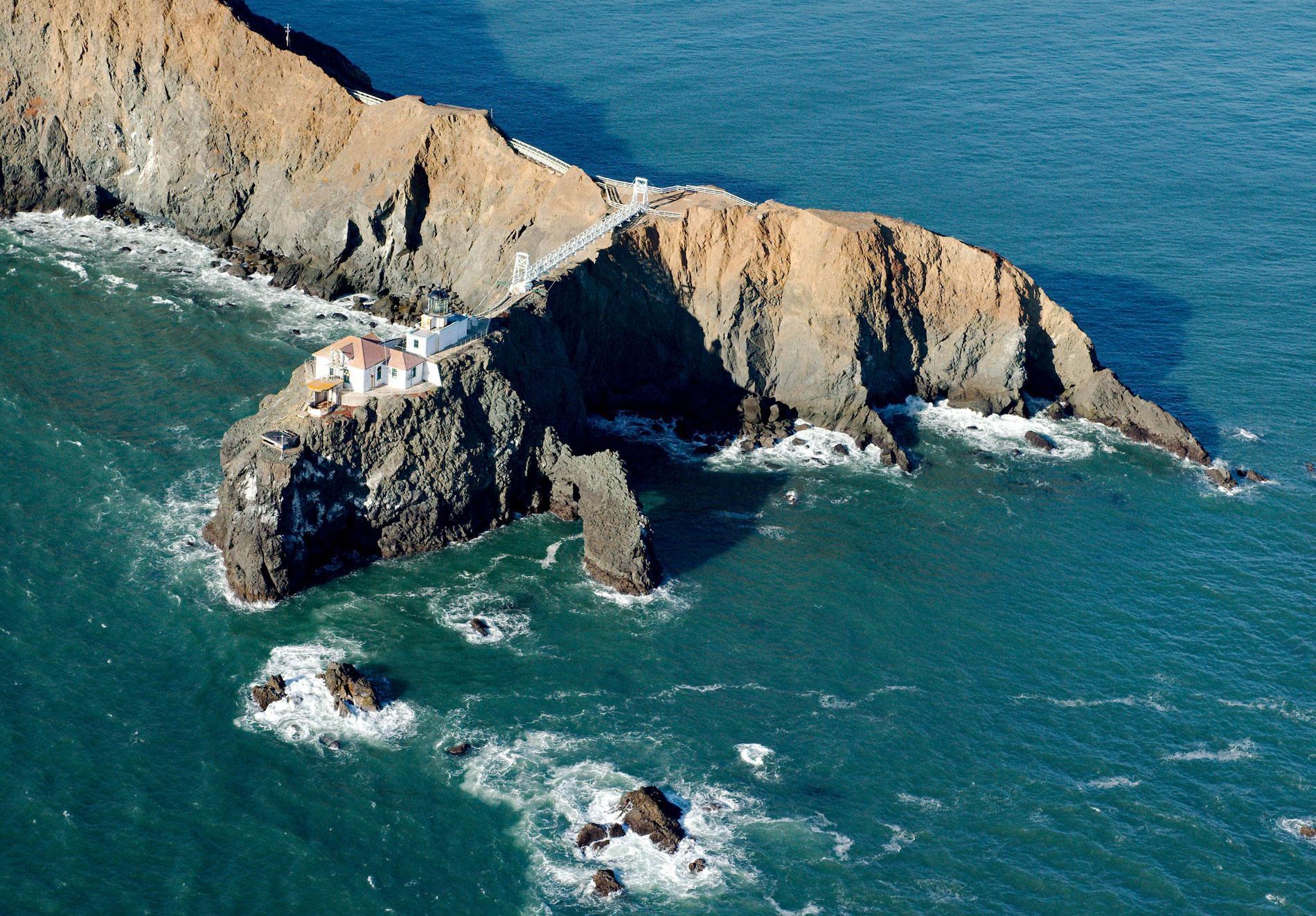Point Bonita is the site of a historic lighthouse situated on the Marin Headlands at the northern entrance to the Golden Gate, about 7 miles (11 km) west-northwest of San Francisco, and 4 miles (7 km) southwest of Sausalito, California. The point was named Punta de Santiago in 1775 by Juan de Ayala, a Spanish naval officer who with the crew of the San Carlos were the first Europeans known to have entered San Francisco Bay through the Golden Gate. That name persisted on charts until 1825 when maps showed the point as Punta Bonete, probably referring to the bonnet of a clergyman. In 1826, Captain Frederick W. Beechey, enroute to the Arctic on HMS Blossom to meet John Franklin, spelled the name Punta Boneta and this version was used by the U.S. Coast Survey in 1851. In 1855, the name Point Bonita became the accepted version, meaning literally ‘pretty point’. Point Bonita extends south from the Marin Headlands which are underlain by geological formations created by the accretion of oceanic sediments from the Pacific Plate to the North American Plate. The headlands represent the Franciscan Complex and consist of pillow basalt overlain by radiolarian chert, which in turn is overlain by greywacke and shale. The erosion resistant point represents the Permanente terrane that consists of greenstone from accreted seamounts that formed near the equator during the Cretaceous and includes pillow lava and tuff, breccia, and intrusive basalt interlayered with diabase dikes.
The Marin Headlands is the traditional territory of the Coast Miwok people that for thousands of years moved with the seasons between Richardson Bay and the Pacific Ocean. In the 18th century, Spanish ranchers occupied the headlands, and in 1835 following the Mexican War of Independence, a Mexican land grant called Rancho Sausalito of 19,752 acres (7,994 ha) was given to José Antonio Galindo by Governor José Figueroa. In 1838, Galindo was arrested for murder and Rancho Sausalito was re-granted to William A. Richardson by Governor Juan Alvarado. In 1848, Alta California was ceded to the United States, and the California Gold Rush made San Francisco a boom town with maritime traffic arriving from around the world. Few captains dared to enter the Golden Gate in the dark, and even those approaching during the day encountered fogs, swift currents, and other navigational hazards. Most vessels arrived by way of Cape Horn or Panama, and although lights were established on Alcatraz Island and on the Farallon Islands, the former was not useful as an entrance marker and the latter too far offshore. More than 300 ships ran aground near the Golden Gate during the Gold Rush years. As early as 1850, the U.S. Coast Survey recommended that a lighthouse be constructed at the entrance to San Francisco Bay, but the U.S. Congress did not fund a lighthouse until 1853.
In 1855, the first light was installed on the Marin Headlands in a brick tower 56 feet (17 m) tall at an elevation of 304 feet (93 m). However, the notoriously dense fog in the Golden Gate would often obscure the light and render it useless to mariners. In 1877, a fog signal and lighthouse were subsequently built closer to sea level at the southwestern tip of Point Bonita. The new location required the builders to overcome many challenges, including the need for a hand-carved, hard rock tunnel 118 feet (36 m) long. A narrow path was also cut into the rocky point and a landing platform with a boom for lifting supplies was built in Bonita Cove. A railway with a 45-degree incline connected the platform to the path, and a steam-powered winch was used to pull small cars filled with supplies and construction materials up the track. The new lighthouse could be accessed only by foot until 1940 when erosion cut a gap in the trail. In 1954, a suspension bridge was built to span the gap, and this was replaced with a new bridge in 2012. The light was automated in 1981 and was the last manned light station on the California coast. Point Bonita Lighthouse is now part of the Golden Gate National Recreation Area and the facility is operated by the National Park Service, with the U.S. Coast Guard continuing to maintain the light and fog signal. Read more here and here. Explore more of Point Bonita and the Marin Headlands here:

